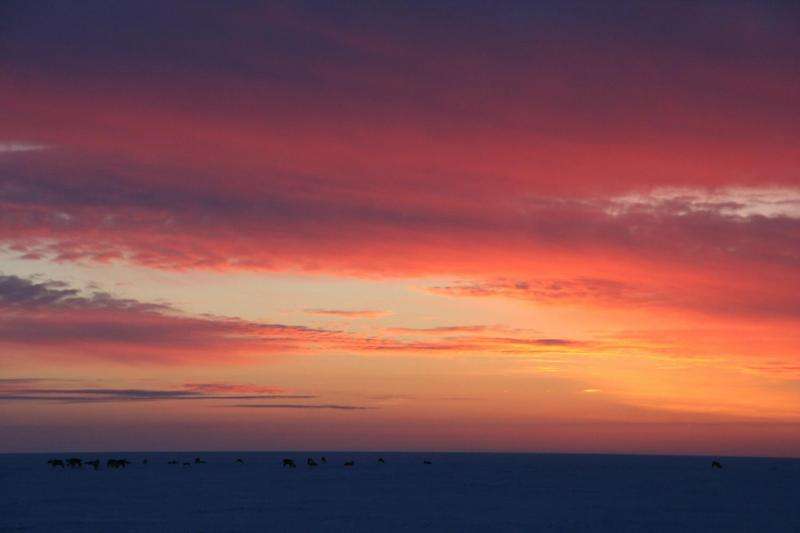First measurements of iodine in the Arctic reveal questions about air pollution

New measurements of molecular iodine in the Arctic show that even a tiny amount of the element can deplete ozone in the lower atmosphere.
This is surprising because iodine is so scarce in the Arctic snowpack compared to its close relatives and known ozone-killers, chlorine and bromine. Less than one part per trillion of iodine is enough to have a significant effect on ozone concentration in the lower atmosphere, according to a study published Sept. 5 in Proceedings of the National Academy of Sciences.
"Where we live, the air is relatively clean because of ozone. It's like a Pac-Man of the atmosphere – it helps to gobble up pollution," said Paul Shepson, a Purdue University professor of analytical and atmospheric chemistry who worked on the study. "But it's also toxic at high concentrations and regulated by the Clean Air Act. We need a Goldilocks amount of ozone in the atmosphere – not too much, not too little."
When sun shines on snow that is on or near sea ice, a chemical reaction takes place, releasing iodine, chlorine and bromine into the atmosphere. These compounds are two halogen atoms bonded together, and when they react with sunlight, they break apart to release those two highly reactive atoms. Often, those atoms collide with ozone near the ground and destroy it. They also react with other pollutants, like mercury, to help remove them.
Shepson's group went to snow-covered Barrow, Alaska, the northernmost city in the United States, to try to learn more about the natural amount of ozone in the atmosphere. They thought it would look like it does here, just without human impact, but they found that the air above sea ice is unique.
"There's a part of the planet that we don't understand very well, and it's the part covered with sea ice. But sea ice is melting," Shepson said. "A natural process controls how much ozone is in the atmosphere, and that process is likely to change dramatically in the polar regions due to climate change."

There are two kinds of ozone on earth: high up (stratospheric) and near the ground (tropospheric). Stratospheric ozone protects life on Earth from harmful radiation, while tropospheric ozone supports a natural cleaning mechanism.
The atmosphere uses ozone, water vapor and sunlight to clean itself. However, there's less water vapor in higher latitudes because it's cold, which slows down the natural cleaning mechanism. In regions covered with sea ice, the strange chemistry involving halogens released by salty ice creates a different cleaning mechanism; if sea ice is removed by climate change, this mechanism could disappear. As humans continue to explore and develop the Arctic region in search of oil and gas, the atmosphere's ability to rid itself of pollutants is going to become increasingly important.
Although too little ozone could be bad, too much could be even worse. Long-term exposure to the pollutant, which is also a greenhouse gas, can lead to asthma and permanent lung damage.
The global distribution of ozone is another looming question for scientists. It lives in the atmosphere for several weeks, which means it could be transported long distances. Thus, more ozone in the Arctic could mean more ozone in lower latitudes. Without sea ice, background ozone levels in the Arctic are likely to increase, making it more difficult to control ozone in polluted environments.
Understanding the processes that regulate ozone in the atmosphere will help scientists create better climate models and, in turn, better air quality models.
"This kind of science is about having a crystal ball. We want to predict the future state of the planet, and the atmosphere is an important part of that," Shepson said.
More information: Angela R. W. Raso et al. Active molecular iodine photochemistry in the Arctic, Proceedings of the National Academy of Sciences (2017). DOI: 10.1073/pnas.1702803114
Journal information: Proceedings of the National Academy of Sciences
Provided by Purdue University




















